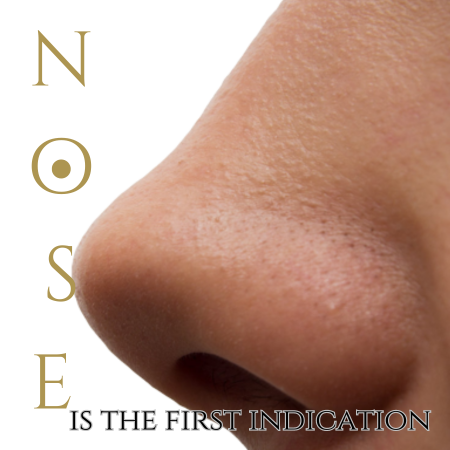Our bodies are remarkable systems that often provide us with subtle signals about our overall well-being. One such indicator is the condition of our nails, which can reveal a lot more than just our personal grooming habits. Those seemingly innocuous lines and ridges on our nails may hold valuable clues about our health. From nutritional deficiencies to underlying medical conditions, our nails can serve as a window into our internal health. In this exploration, we will delve into what these lines on your nails mean for your health and discuss ways to address them.
Nail Anatomy: A Brief Overview
Before diving into the significance of those lines, let’s understand the basics of nail anatomy. Nails are composed of a protein called keratin, the same protein that forms the structure of our hair and the outer layer of our skin. Nails grow from the nail matrix, which is located beneath the cuticle. As new cells are produced in the nail matrix, older cells are pushed outward, forming the visible part of the nail. This growth occurs at an average rate of about 3 millimeters per month for fingernails.
Understanding Nail Lines: The Health Connections
Those lines and ridges on your nails are not just random imperfections; they can offer insights into your body’s condition. Let’s explore some common types of nail lines and their potential health implications:
- Beau’s Lines: These are horizontal grooves that run across the nails and can be indicators of severe stress or illness. Beau’s lines are often caused by disruptions in nail growth due to conditions like malnutrition, fever, diabetes, and certain skin conditions. They can also be a sign of trauma to the nail matrix. Addressing the underlying cause is crucial for the lines to disappear.
- Vertical Ridges: Vertical ridges are a natural part of aging and are usually harmless. However, if these ridges are sudden and severe, they could be a sign of nutritional deficiencies, especially if they are accompanied by other symptoms. A balanced diet rich in vitamins and minerals can help alleviate these ridges over time.
- White Spots: Often called “leukonychia,” these small white spots or lines on the nails are usually caused by minor trauma to the nail matrix. They can also be linked to zinc deficiency, but more commonly, they are harmless and grow out as the nail continues to grow.
- Muehrcke’s Lines: These paired white lines run horizontally across the nails and are linked to low levels of protein and albumin in the blood. They can be an indicator of kidney disease, liver disease, or malnutrition. Treating the underlying condition is essential to resolve these lines.
- Terry’s Nails: This condition is characterized by a white nail bed with a narrow pink strip at the tip. Terry’s nails can be associated with aging, liver disease, congestive heart failure, and diabetes. Identifying and managing the root cause is vital for improving nail health.
- Yellow Nails: Nails that appear yellow can be indicative of fungal infections or, in rare cases, more serious conditions such as thyroid disease, psoriasis, or lung disease. Consulting a healthcare professional is crucial for accurate diagnosis and treatment.
- Half and Half Nails: Also known as Lindsay’s Nails, these nails have a brownish band at the tip and a pale, whitish area near the cuticle. Half and half nails can be linked to conditions like kidney disease, systemic lupus erythematosus, and zinc deficiency.
Caring for Your Nails: Steps to Healthier Nails
While understanding the signs your nails might be showing is crucial, it’s equally important to adopt practices that promote healthy nail growth and overall well-being. Here are some tips to consider:
- Maintain a Balanced Diet: A nutritious diet rich in vitamins, minerals, and protein is essential for strong and healthy nails. Include foods that are good sources of biotin (such as eggs, nuts, and whole grains) and antioxidants (found in fruits and vegetables).
- Stay Hydrated: Drinking an adequate amount of water supports not only your overall health but also the health of your nails. Hydration helps prevent brittleness and promotes nail flexibility.
- Protect Your Nails: Avoid exposing your nails to excessive moisture, harsh chemicals, and trauma. Wearing gloves while doing household chores and using gentle nail care products can prevent unnecessary damage.
- Practice Good Nail Hygiene: Regularly clean and trim your nails to prevent dirt and bacteria from accumulating. Avoid biting your nails or using them as tools, as this can cause damage.
- Moisturize: Applying a moisturizing lotion to your nails and cuticles can help prevent dryness and brittleness. Use products containing ingredients like vitamin E or jojoba oil.
- Consult a Professional: If you notice persistent changes in your nails or are concerned about their appearance, consult a dermatologist or a healthcare provider. They can help diagnose any underlying health conditions and recommend appropriate treatments.
- Avoid Overuse of Nail Products: Excessive use of nail polish, acrylics, and gels can weaken your nails and lead to various nail problems. Give your nails a break occasionally to allow them to recover.
In Conclusion
The lines and ridges on your nails are more than just cosmetic imperfections; they can serve as important indicators of your health. Understanding the potential meanings behind these lines can prompt you to address underlying health concerns and make necessary lifestyle changes. While some lines might naturally resolve as your nails grow, others may require targeted interventions. By adopting a holistic approach that combines proper nutrition, good nail care practices, and timely medical attention, you can maintain healthy nails that reflect your overall well-being. Remember, your nails are not just a canvas for fashion; they are also a canvas for insights into your body’s health


